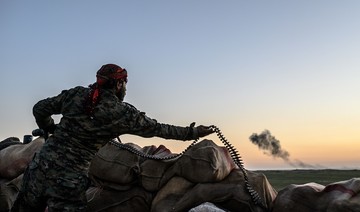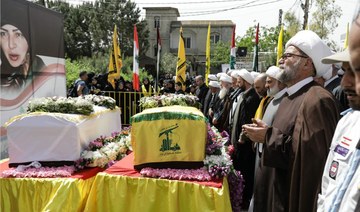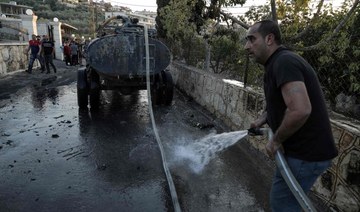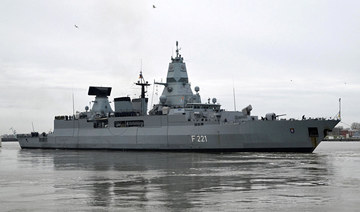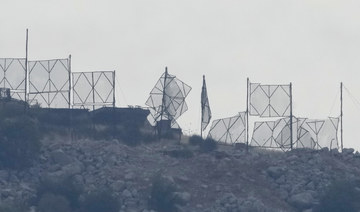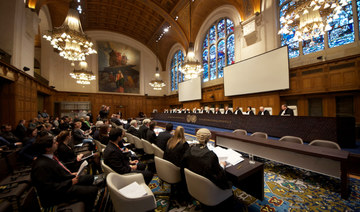BAGHDAD: Daesh fighters facing defeat in Syria are slipping across the border into Iraq, where they are destabilizing the country’s fragile security, US and Iraqi officials say.
Hundreds — likely more than 1,000 — Daesh fighters have crossed the open, desert border in the past six months, defying a massive operation by US, Kurdish, and allied forces to stamp out the remnants of the militant group in eastern Syria, according to three Iraqi intelligence officials and a US military official.
The officials spoke on condition of anonymity because they were not authorized to comment publicly on intelligence matters. But indications of the extremist group’s widening reach in Iraq are clear.
Cells operating in four northern provinces are carrying out kidnappings, assassinations, and roadside ambushes aimed at intimidating locals and restoring the extortion rackets that financed the group’s rise to power six years ago.
“IS is trying to assert itself in Iraq, because of the pressure it is under in Syria,” said Brig. Gen. Yahya Rasoul, the Iraqi army spokesman.
The militants can count between 5,000 and 7,000 among their ranks in Iraq, where they are hiding out in the rugged terrain of remote areas, according to one intelligence official.
In Syria, Kurdish-led forces backed by the US-led coalition have cornered the militants in a pocket less than one square kilometer in Baghouz, a Euphrates River village near the 600-kilometer (370-mile) border.
The Iraqi army has deployed more than 20,000 troops to guard the frontier, but militants are slipping across, mostly to the north of the conflict zone, in tunnels or under the cover of night. Others are entering Iraq disguised as cattle herders.
They are bringing with them currency and light weapons, according to intelligence reports, and digging up money and arms from caches they stashed away when they controlled a vast swath of northern Iraq.
“If we deployed the greatest militaries in the world, they would not be able to control this territory,” Rasoul said. “Our operations require intelligence gathering and airstrikes.”
At its height in 2014 and 2015, the Daesh group ruled over a self-proclaimed “caliphate” that spanned one-third of Iraqi and Syrian territory. The extremist offshoot of Al-Qaeda in Iraq threatened to exterminate religious minorities.
Iraqi forces, with US, Iranian, and other international help, were able to turn the war around and Baghdad declared victory over the group in December 2017, after the last urban battle had been won.
But precursors to Daesh have recovered from major setbacks in the past, and many fear the militants could stage a comeback. The group is already waging a low-level insurgency in rural areas.
The Associated Press verified nine Daesh attacks in Iraq in January alone, based on information gathered from intelligence officials, provincial leaders, and social media. Daesh often boasts of its activities through group messaging apps such as Telegram.
In one instance, a band of militants broke into the home of a man they accused of being an informant for the army, in the village of Tal Al-Asfour in the northern Badush region. They shot him and his two brothers against the wall, and posted photos of the killing on social media.
Sheikh Mohamed Nouri, a local tribal leader, said it was meant to intimidate locals in order to keep them from sharing intelligence with security officials.
“I have members of our tribal militia receiving threatening messages warning them to abandon their work,” said Nouri.
In other instances, Daesh cells have killed mukhtars — village leaders and municipal officials. They have attacked rural checkpoints with car bombs and mortar fire, and burned down militia members’ homes. In the Shurgat area in central Iraq, militants stopped a police vehicle last month and killed all four officers inside.
Other activities have aimed at restoring the group’s financial footing.
On Sunday, militants kidnapped a group of 12 truffle hunters in the western Anbar province, marking a return to a strategy of intimidating and extorting farmers and traders for financial gain.
Naim Kaoud, the head of provincial security, urged locals to suspend truffle gathering, which has just one season a year and is an important source of income for rural families.
Other truffle hunters have disappeared in the countryside, according to former lawmaker and Anbar tribal figure Jaber Al-Jaberi. He said the militants are taking cuts from truffle hunters in exchange for access to the land, and kidnapping or killing those who refuse to cooperate.
“This is one of the sources of their funding,” said Al-Jaberi.
Al-Jaberi cautioned against exaggerating the Daesh threat, saying the militants have been less successful at infiltrating communities than they were earlier this decade.
“These are different times,” he said.
Others are not so sure. Hans-Jakob Schindler, a former adviser to the UN Security Council on Daesh and other extremist groups, said the same grievances that gave rise to Daesh in 2013 remain today, including a large Sunni minority that feels politically and economically marginalized by the Shiite-led central government.
“I’m very worried that we are just repeating history,” said Schindler, who is now at the Counter Extremism Project.
He said he has seen Daesh “revert to the old type” of “classical terror attacks” and kidnapping for ransom, tactics that were once widely employed by Al-Qaeda in Iraq.
The militants staged a dramatic resurgence after 2011, when US forces withdrew from Iraq and civil war broke out in neighboring Syria. Today some 5,200 American forces are based in Iraq, after they were invited back to help stem the IS rampage in 2014.
After President Donald Trump promised in December to pull American forces out of Syria, Iraqi lawmakers began clamoring for the US to leave, arguing that the mission against Daesh was approaching its end.
But with no letdown to Daesh militancy, those calls have petered out.
From Syria, Daesh slips into Iraq to fight another day
From Syria, Daesh slips into Iraq to fight another day

- Hundreds Daesh fighters have crossed the open, desert border in the past six months, defying a massive operation by US, Kurdish, and allied forces
- “IS is trying to assert itself in Iraq, because of the pressure it is under in Syria,” said the Iraqi army spokesman
How fierce but undeclared Israel-Hezbollah war is hurting civilians in south Lebanon
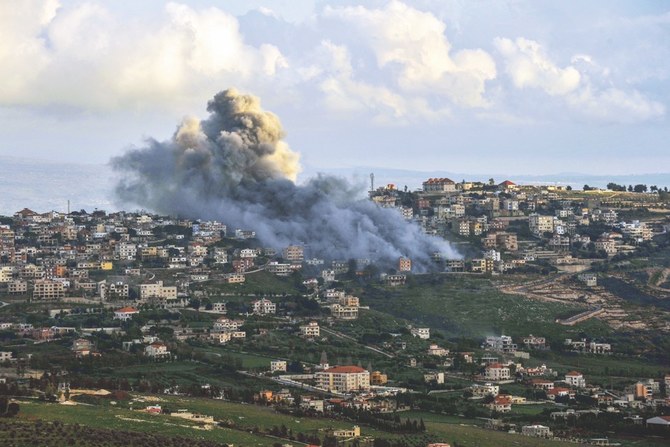
- IDF and Iran-backed Lebanese group began trading fire across the border following Oct. 7 Hamas-led attack
- Farming communities in southern Lebanon have seen their fields burned, homes destroyed by Israeli strikes
BEIRUT: For more than six months, an undeclared war has been raging along Lebanon’s southern border with Israel, leading to the displacement of some 92,000 Lebanese citizens and the destruction of homes, businesses and agriculture.
The front line of this conflict between Hezbollah and the Israeli armed forces stretches some 850 km, incorporating parts of the UN-monitored Blue Line, with missiles fired by both sides reaching up to 15 km into their respective territories.
Although the exchanges have remained relatively contained, Israeli attacks have caused civilian deaths, damaged and destroyed homes, infrastructure and farmland, and ignited forest fires. Civilians on both sides of the border have been displaced.
“Our town is right on the border, and there are now only 100 out of 1,000 residents, and the rest are those who are unable to secure an alternative livelihood,” Jean Ghafri, mayor of Alma Al-Shaab, a predominantly Christian village in the Tyre District, told Arab News.
“So far, the shelling has destroyed 94 houses, and 60 percent of the olive groves, mango, and avocado orchards, vineyards, olive and carob trees have been burned, and some of the olive trees that were burned are 300 years old.”
Most of the people in the border region are Shiite. The rest are Sunni, Druze and Christians, along with dozens of Syrian refugee families, some 10,000 troops of UNIFIL, or UN Interim Force in Lebanon, and a few thousand Lebanese soldiers.
Members of Lebanon’s Iran-backed Hezbollah militia began launching rocket attacks against Israel on Oct. 8, a day after the Hamas-led assault on southern Israel triggered the war in Gaza.

Since then, Hezbollah and the Israeli military have traded fire along the shared border, raising fears that the Gaza conflict could spill over and engulf Lebanon in a devastating war reminiscent of the 2006 Israeli invasion.
“The town, although it is in a conflict zone, did not witness this level of direct destruction in the 2006 war,” said Ghafri. “It is impossible to know the exact damage because the area is considered a war zone. Those who are still there are receiving food rations from religious or international organizations.”
Al-Dahira is another town that has come under heavy shelling on an almost daily basis since the conflict began. It was from its nearby border that Hezbollah began its military assault on Oct. 8.
Its mayor, Abdullah Ghuraib, counts “17 houses that have been completely destroyed and dozens of houses that are no longer habitable due to the force of the shelling.”
He said: “There is only one woman, Radhya Atta Sweid, 75 years old, who insisted on staying in her house and not leaving. She had stayed in her house during the 2006 war and her brother’s wife, who was with her in the house, was killed and she remained there.”
Hassan Sheit, the mayor of Kfarkela, a village that is only a stone’s throw from the Israeli border, painted a similar picture of destruction and displacement.
“The material losses are great. This is a town where people live in summer and winter, of which only 7 percent of the 6,000 inhabitants remain,” Sheit told Arab News.
“The displacement from the town caused people to be homeless, living with relatives and in rented apartments, and living on aid from civil society and Hezbollah, which varies between financial and in-kind assistance.

“The town lost 15 martyrs as a result of the Israeli bombardment. What is happening today in the town was not done in the 2006 war.”
Thousands of families from towns and villages across southern Lebanon fled as soon as the first exchanges began. Many of these communities are now ghost towns, having lost some 90 percent of their residents.
The displaced, most of them women and children, have moved to towns further away from the border, including areas around Tyre, Nabatieh, Zahrani, Sidon, Jezzine and even the southern suburbs of Beirut, where they rent or stay with relatives.
Those without the means to support themselves have been forced to reside in shelters established by local authorities. These shelters, most of them in school buildings, are concentrated in the city of Tyre, within easy reach of their towns and villages.
This protracted displacement has been accompanied by economic hardship brought on by the financial crisis that struck Lebanon in late 2019. To make matters worse, many south Lebanese have lost their livelihoods as a result of their displacement.

Ghafri, the mayor of Alma Al-Shaab, said several displaced residents had said expenses in Beirut were different from those in the villages. One person had told him residents “do not work and therefore no income reaches them, except for in-kind assistance from civil and international organizations and from wealthy expatriates.
“There are no political parties in Alma Al-Shaab, no militants, and all its people are in favor of the Lebanese state and refuse to allow their town to be used as a battlefield. People are worried about their future, and I am trying to convey this position to Hezbollah.”
Those who initially benefited from reduced or rent-free arrangements are now being asked to pay more or move on. The rent for some apartments has reportedly jumped from $100 to $1,000 per month, placing a significant strain on household savings and incomes.
According to media reports, Hezbollah has intervened in support of displaced households, calling on apartment owners in the south and in Beirut’s southern suburbs to cap their rents, and providing families with financial aid.
Families who spoke to local media said Hezbollah provided a quarterly payment of $1,000 for three months, then reduced the amount to an average of $300 per month, covering about 15,000 displaced families.
Like other displaced households, the people of Al-Dahira have complained of “running out of money and relatives’ discomfort with their presence,” said the town’s mayor Ghuraib.

“Two days ago, we came to the town to pay our respects to someone who died. We entered the town in a hurry and quickly inspected our homes, and I saw men crying about the loss of their livelihoods and possessions.
“The people of Al-Dahira make a living from growing tobacco, olives and grains, but the (crops of the) previous season burned down and now the land is on fire.
“The problem is that the situation is getting worse day by day. People’s lives have been turned upside down. If the war drags on, the land will die. The Israelis are deliberately turning it into a scorched earth.”
What is undeniable is that the displacement of entire farming communities has brought the once bountiful agricultural economy in many areas to the brink of collapse.
“The people of Aitaroun make their living from agriculture, especially tobacco farming, and the losses today are great,” Salim Murad, the mayor of the southeastern border town, told Arab News.

“There are 40 dairy cattle farmers with about 500 cows and two factories for making cheese and dairy products. With the displacement, production stopped and the displaced people most likely sold their cows or slaughtered them, which means that another link of agricultural production has been destroyed.
“There were 2,200 beehives distributed along the border, as the area is rich and varied in pasture, but these hives were completely lost, and farmers lost the olive season, and these orchards lost their future suitability for cultivation.”
It is unclear whether any kind of compensation will be paid to these farming households once the violence ends. Although the situation appears bleak, Kfarkela mayor Sheit is confident the region’s resilient communities will bounce back.
“Once the war stops, people will return to their homes and rebuild them,” he said. “Because we are the owners of the land.”

US military destroys Houthi drone boat
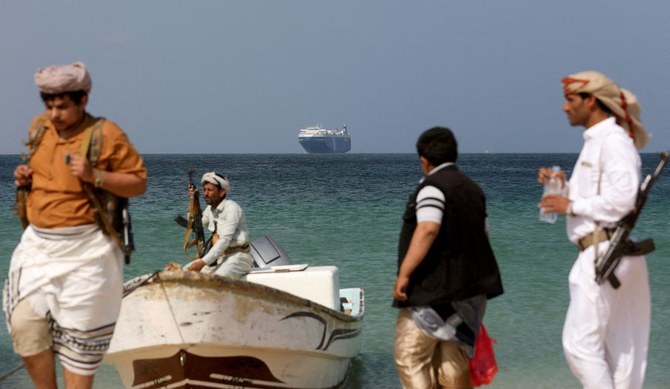
- CENTCOM: It was determined the USV presented an imminent threat to U.S., coalition forces, and merchant vessels in the region
- Houthi leader Mohammed Ali Al-Houthi: Yemen’s strategic stockpile of deterrent weapons is much much larger than you would imagine
AL-MUKALLA: The US Central Command said that its forces have destroyed an explosive-laden and remotely operated boat in a Houthi-held area of Yemen, as the Yemeni militia reaffirmed threats to increase their Red Sea ship campaign unless Israel ceases its assault in Gaza.
In a statement on X on Wednesday morning, the US military said it destroyed an uncrewed surface vessel at approximately 1:52 p.m. (Sanaa time) on Tuesday in Yemen after determining that it posed a threat to the US and its allies, as well as international commercial and naval ships in international waters off Yemen’s coasts.
“It was determined the USV presented an imminent threat to U.S., coalition forces, and merchant vessels in the region. These actions are taken to protect freedom of navigation and make international waters safer and more secure for U.S., coalition, and merchant vessels,” USCENTCOM said.
In Yemen, the Houthis said that the US and UK conducted one attack on the Red Sea Ras Essa in the western province of Hodeidah on Tuesday but did not specify the target area or the extent of the damage.
During the last seven months, the Houthis have seized a commercial ship, sunk another, and fired hundreds of drones, ballistic missiles, and remotely controlled drones at US, UK, Israeli, and other international ships in the Red Sea, Bab Al-Mandab Strait, and Gulf of Aden. The Houthis claim they solely target Israel-linked and Israel-bound ships to push Israel to let humanitarian supplies into the Gaza Strip. They also added ships tied to the US and the UK to their list of targets after the two nations launched strikes against areas of Yemen under their control.
On Tuesday, the UK Maritime Trade Operations, which tracks ship attacks, advised ships passing through the Indian Ocean to exercise caution after receiving a report of a drone attacking a commercial ship 170 nautical miles southeast of Yemen’s Socotra island and approximately 300-400 nautical miles southeast of the Horn of Africa overnight on April 26. “The vessel and crew are reported safe and the vessel is proceeding to its next port of call,” the UK agency said.
Similarly, the Houthi Supreme Political Council warned the US on Tuesday against conducting a fresh wave of strikes against regions under their control in punishment for the militia’s recent increase in assaults on ships in the Red Sea. “The consequences of any escalation will not stop at Yemen’s borders, nor will they impact the noble Yemeni stance, the steadfastness of the Yemeni people, or the heroism of the military forces at all levels,” Houthi council members said in a statement.
On Tuesday, Houthi leader Mohammed Ali Al-Houthi issued the same warning to the US, claiming to possess huge military capabilities that would be utilized to counter any future US military strikes. “Do not play with fire. Yemen’s strategic stockpile of deterrent weapons is much much larger than you would imagine,” Al-Houthi said.
The Houthis said this week that they are aware that the US is ready to unleash a fresh round of bombings on Yemeni territories under their control, after the militia’s escalating assault against ships in the Red Sea.
Lebanese Christian leader says Hezbollah’s fighting with Israel has harmed Lebanon

- Samir Geagea of the Lebanese Forces Party said Hezbollah should withdraw from areas along the border with Israel
- The Lebanese army should deploy in all points where militants of the Iran-backed group have taken positions
`MAARAB, Lebanon: The leader of a main Christian political party in Lebanon blasted the Shiite militant group Hezbollah for opening a front with Israel to back up its ally Hamas, saying it has harmed Lebanon without making a dent in Israel’s crushing offensive in the Gaza Strip.
In an interview with AP on Tuesday night, Samir Geagea of the Lebanese Forces Party said Hezbollah should withdraw from areas along the border with Israel and the Lebanese army should deploy in all points where militants of the Iran-backed group have taken positions.
His comments came as Western diplomats try to broker a de-escalation in the border conflict amid fears of a wider war.
Hezbollah began launching rockets toward Israeli military posts on Oct. 8, the day after Hamas-led militants stormed into southern Israel in a surprise attack that sparked the crushing war in Gaza.
The near-daily violence has mostly been confined to the area along the border, and international mediators have been scrambling to prevent an all-out war. The fighting has killed 12 soldiers and 10 civilians in Israel. More than 350 people have been killed in Lebanon including 273 Hezbollah fighters and more than 50 civilians.
“No one has the right to control the fate of a country and people on its own,” Geagea said in his heavily guarded headquarters in the mountain village of Maarab. “Hezbollah is not the government in Lebanon. There is a government in Lebanon in which Hezbollah is represented.” In addition to its military arm, Hezbollah is a political party.
Geagea, whose party has the largest bloc in Lebanon’s 128-member parliament, has angled to position himself as the leader of the opposition against Hezbollah.
Hezbollah officials have said that by opening the front along Israel’s northern border, the militant group has reduced the pressure on Gaza by keeping several Israeli army divisions on alert in the north rather than taking part in the monthslong offensive in the enclave.
“All the damage that could have happened in Gaza ... happened. What was the benefit of military operations that were launched from south Lebanon? Nothing,” Geagea said, pointing the death toll and massive destruction in Lebanon’s border villages.
Israel’s war against Hamas in Gaza has killed more than 34,000 Palestinians, caused wide destruction and displaced hundreds of thousands to the city of Rafah along Egypt’s border. Israel’s Prime Minister Benjamin Netanyahu vowed Tuesday to launch an offensive into the southern Gaza city of Rafah despite international calls for restraint.
Geagea said Hezbollah aims through the ongoing fighting to benefit its main backer, Iran, by giving it a presence along Israel’s border and called for the group to withdraw from border areas and Lebanese army deploy in accordance with a UN Security Council resolution that ended the 34-day Israel-Hezbollah war in 2006.
Geagea also discussed the campaign by his party to repatriate Syrian refugees who fled war into Lebanon.
Those calls intensified after a Syrian gang was blamed for last month’s killing of Lebanese Forces official Pascal Suleiman, allegedly in a carjacking gone wrong, although many initially suspected political motives.
Lebanon, with a total population of around 6 million, hosts what the UN refugee agency says are nearly 785,000 UN-registered Syrian refugees, of which 90 percent rely on aid to survive. Lebanese officials estimate there may be 1.5 million or 2 million, of whom only around 300,000 have legal residency.
Human rights groups say that Syria is not safe for mass returns and that many Syrians who have gone back — voluntarily or not — have been detained and tortured.
Geagea, whose party is adamantly opposed to the government of President Bashar Assad in Syria, insisted that only a small percentage of Syrians in Lebanon are true political refugees and that those who are could go to opposition-controlled areas of Syria.
The Lebanese politician suggested his country should follow in the steps of Western countries like Britain, which passed controversial legislation last week to deport some asylum seekers to Rwanda.
“In Lebanon we should tell them, guys, go back to your country. Syria exists,” said Geagea, who headed the largest Christian militia during Lebanon’s 1975-90 civil war.
Turkiye to join South Africa’s genocide case against Israel at World Court, minister says
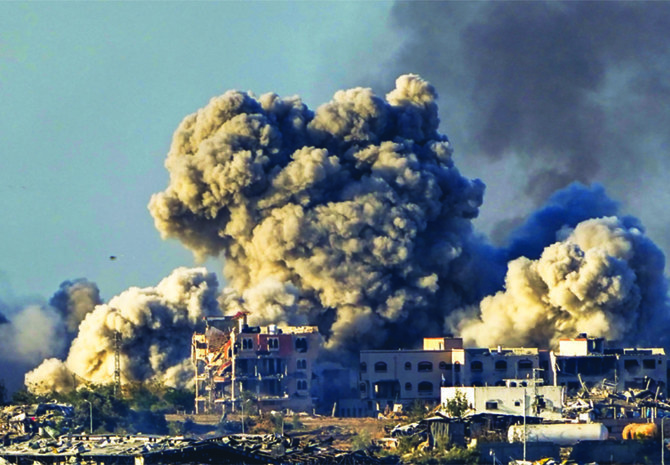
- “Turkiye will continue to support the Palestinian people in all circumstances,” Fidan said
- In January, President Tayyip Erdogan said that Turkiye was providing documents for the case at the ICJ
ISTANBUL: Turkish Foreign Minister Hakan Fidan said on Wednesday that Turkiye would join in South Africa’s genocide case against Israel at the International Court of Justice (ICJ).
“Upon completion of the legal text of our work, we will submit the declaration of official intervention before the ICJ with the objective of implementing this political decision,” Fidan said in a joint press conference with Indonesia’s Foreign Minister Retno Marsudi in Ankara.
“Turkiye will continue to support the Palestinian people in all circumstances,” he said.
The ICJ ordered Israel in January to refrain from any acts that could fall under the Genocide Convention and to ensure its troops commit no genocidal acts against Palestinians, after South Africa accused Israel of state-led genocide in Gaza.
In January, President Tayyip Erdogan said that Turkiye was providing documents for the case at the ICJ, also known as the World Court.
Israel and its Western allies described the allegation as baseless. A final ruling in South Africa’s ICJ case in The Hague could take years.
UAE braced for severe weather, task force on high alert
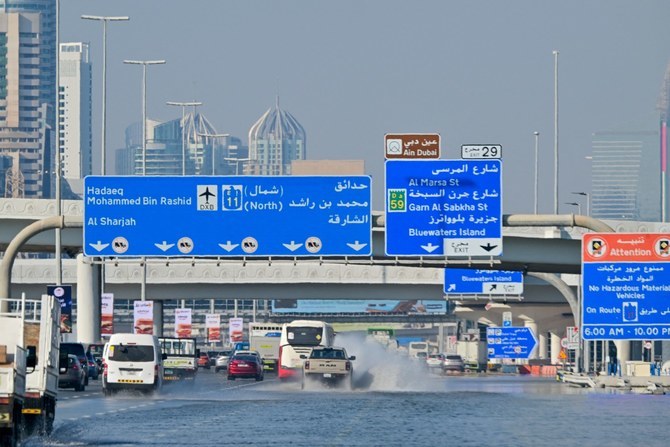
- UAE’s disaster management authority warns residents to expect rain, storms over next two days
- All private schools in UAE to switch to remote learning as precaution on Thursday and Friday
DUBAI: Challenging weather is again expected in the UAE, with parts of the country’s east coast set to experience strong winds.
The National Emergency Crisis and Disaster Management Authority said gusts of up to 40 kph were likely to impact the area on Thursday.
While the NCM forecasts less severe conditions than those in April, it has warned residents to expect rain and storms over the next two days. There is a possibility of hail in the eastern regions, possibly extending to some internal and western areas.
Clouds are expected to decrease on Friday and Saturday, with possible light to medium rain which may be heavier in some southern and eastern regions.
Government agencies are coordinating with the Joint Weather and Tropical Assessment Team to monitor developments, said a statement from the NCM.
The teams will assess the potential impact of weather conditions and implement proactive measures where necessary.
Dubai’s government announced all private schools in the UAE would switch to remote learning on Thursday and Friday as a precaution.
Authorities have urged the public to exercise caution, adhere to safety standards and guidelines, refrain from circulating rumors, and rely on official sources for information.
The UAE is still recovering from last month’s storms which caused widespread flooding, submerging streets and disrupting flights at Dubai International Airport.



